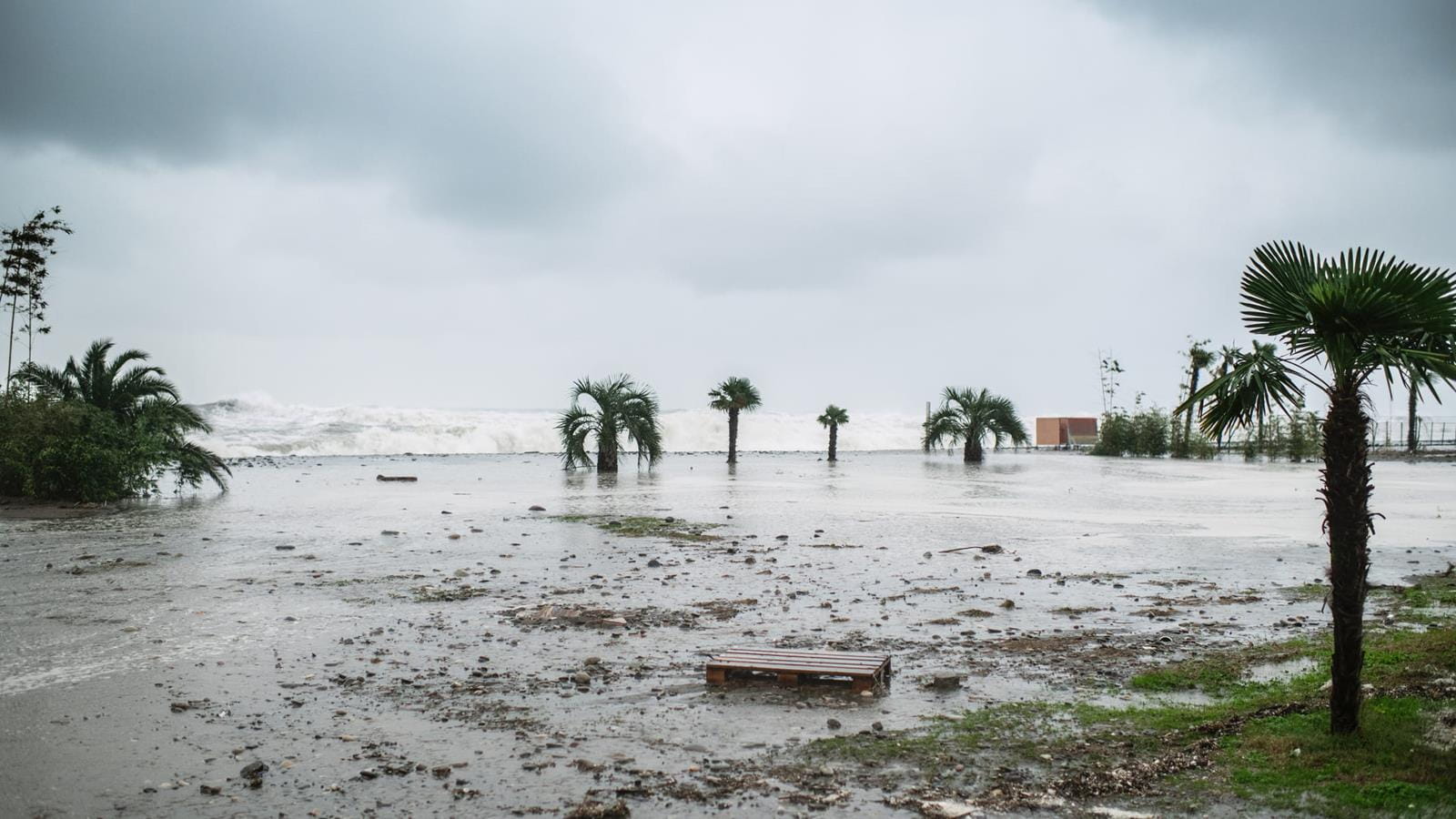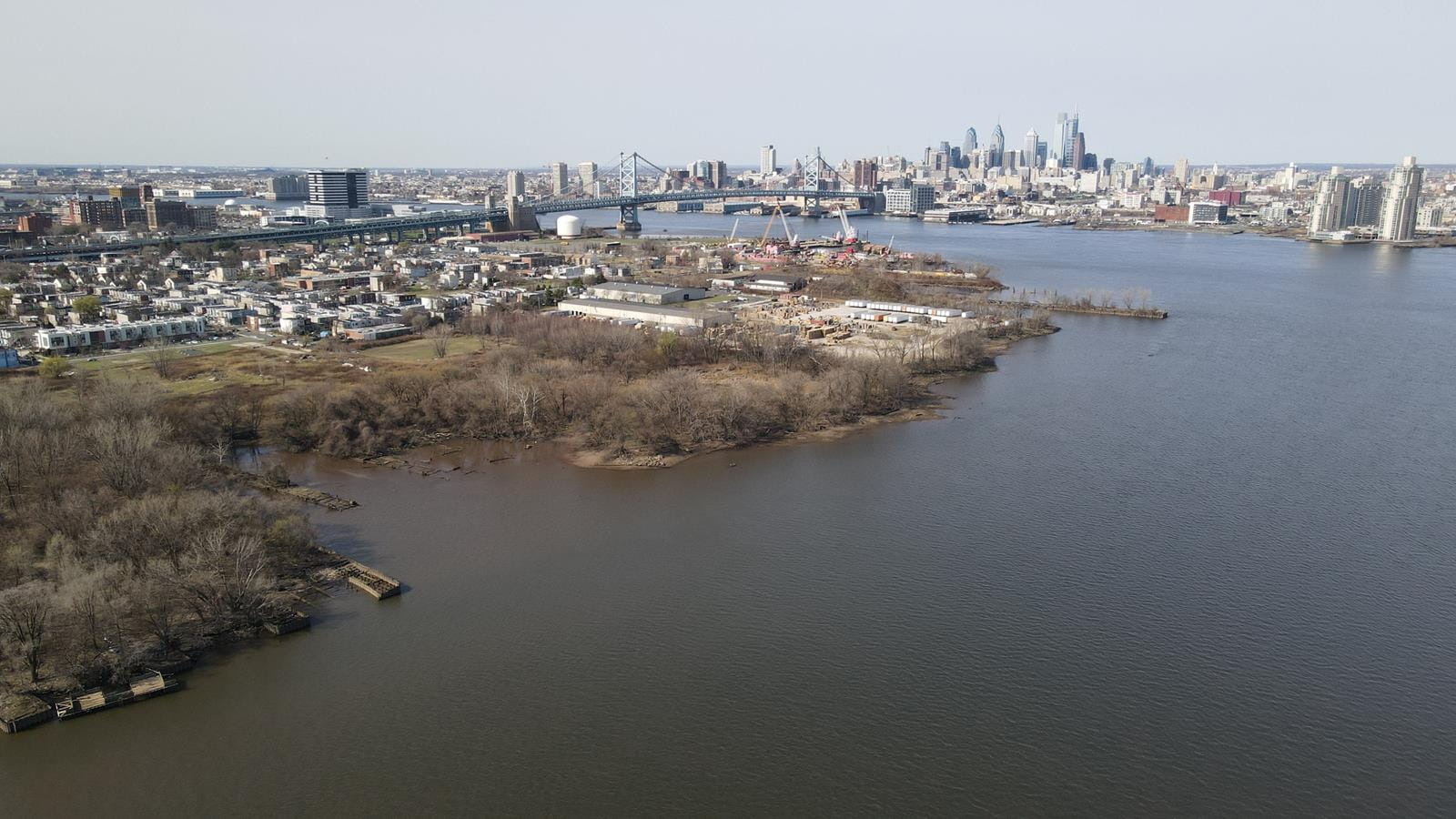Climate Change and Sea Level Rise Pose an Acute Challenge for Cities with Combined Sewer Systems

- Drexel Environmental Collaboratory Releases Cross-Sector Findings on Severe Weather Recovery Challenges
- Drexel Launches the Manuel Stamatakis Center for Alternative Investments at the LeBow College of Business
- Drexel-Penn A Cappella Sing-Off Brings a New Battle of 33rd Street
- How and When Could AI Be Used in Emergency Medicine?

Cities with combined sewer systems, like Camden, New Jersey, are facing an additional threat each time it floods, and these event could soon be compounded by the effects of climate change and sea level rise, according to Drexel researchers.
Older coastal cities, like Philadelphia, New York and Boston are at risk of being inundated by untreated sewage during floods. Due in part to the design of their combined sewer systems and in part due to sea level rise, these cities could be facing a growing public health crisis as climate change also drives more extreme precipitation, according to researchers at Drexel University who study urban stormwater management. The group recently published research that modeled the potential extent of the problem in a section of the coastal city of Camden, New Jersey, and the effectiveness of one proposed intervention to help protect these communities.
A Compounding Problem
Beginning in 1855 many of America’s coastal communities were designed with a combined sewer system. In these systems, stormwater and sewage are collected using the same pipes. Originally, these pipes discharged to streams and rivers; later they were directed toward wastewater treatment facilities. But the pipes can only convey a certain amount of flow. During wet weather events, to avoid inundating the wastewater treatment plants some portion of the flow still overflows into the natural water bodies through features known as combined sewer overflows – or CSOs.
While the Federal Pollution Control and Clean Water Act has pushed communities to upgrade their infrastructure and take steps to curtail CSOs, climate change brings an entirely new dimension to this regulatory compliance challenge.
When the water level in the receiving water body is high, the CSO flap gates that ordinarily keep river water from backing up into the sewer pipes can’t open as easily. Without these relief valves fully open, the combined sewage generated during wet weather can back up in the system, even spilling out onto the street or into people’s basements.
As climate change brings more heavy rain and higher river levels, the problem worsens and cannot be mitigated with conventional approaches to stormwater management.
Montalto’s team has been working closely with the Camden County Municipal Utilities Authority (CCMUA) to study potential solutions to this problem.
Looking for a Better Answer
In their research, recently published in the Journal of Water Management Modeling, the group reported on the results of their detailed hydrologic and hydraulic models of flooding and combined sewer overflows in the Cramer Hill section of Camden. This is a flood-prone portion of the city located very close to the largest CSO point on the East side of the Delaware River.
Once they calibrated their models to historical conditions, they used them to simulate how flooding and CSOs would change in the future, as the climate changes. The same models are also being used to evaluate the potential effectiveness of different conceptual solutions.
“CCMUA has been working diligently for years to reduce environmental injustices in Camden,” Montalto said. “It has worked to reduce odors from its wastewater treatment plant and reduce the frequency and pollution associated with CSOs. It’s exciting to work with them now on the development of solutions that can also reduce flooding and make Camden’s neighborhoods more resilient to climate change. Our modeling will support CCMUA as it develops multifunctional infrastructure strategies.”
Drexel’s model is unique because it is an “all-pipes” model built by assembling many different geospatial data sets into one computer model. This allows the team to simulate stormwater flows through virtually every surface, catch basin, and pipe in the area.
To check the accuracy of the modeling program, the researchers compared the model’s prediction of annual combined sewer overflow discharge volume to CCMUA records. Simulated flood patterns were compared to photographs of actual floods taken by the research team during storms over the summer of 2021. “It was important to perform a thorough validation process because we will be relying on this model to simulate future climate and infrastructure conditions,” Montalto said. “Not every municipality has been making recordings of all the necessary data to build a complete model, so part of this research was showing that the ad-hoc process we developed could reliably validate our model without some of the data it would normally require.”
Projecting Future Challenges
Montalto’s team used the validated model to simulate what would happen if precipitation increased by up to 30% and if the sea level rose by up to 1.8 meters. They simulated each of these climatic changes independently, and together.
The model projected that increased precipitation would result in overflow discharges 21-66% above the current annual discharge volume. And, although each of the sea-level-rise scenarios resulted in a reduction in the number of overflow events and annual overflow discharge, the duration of flooding increased with each compounding factor.
Testing a Theory
One key strategy that Camden has been considering for Cramer Hill’s water management challenges involves diverting upstream stormwater away from its sewer system. With Drexel’s modeling program, the municipality was finally able to test the idea.
Dubbed the “Pennsauken disconnection,” the suggestion is to divert stormwater generated in the town of Pennsauken, New Jersey, which is immediately northeast of Camden, away from Cramer Hill’s combined sewer system via an intermediary pumping station.
The team found that the disconnection will help under all future climate scenarios. However, even with the disconnection, the impacts of climate change and sea level rise still resulted in an increase in the number of flooding events; and a significant increase in the duration of flooding under the sea-level-rise conditions.
Setting a New Course
Overall, the results suggest that increased precipitation events due to climate change will cause more combined sewer overflows. And sea level rise will make it more difficult for these systems to discharge into nearby bodies of water. Some 40 million people currently live in areas served by combined sewer systems, so this is both a pressing issue and one that could affect a significant number of people throughout the country.
Montalto’s group plans to continue refining its Cramer Hill model, as they collect information about water flow through the sewage network and surface flooding. They will also model other infrastructure interventions to manage stormwater.
This research was supported by the Consortium for Climate Risks in the Urban Northeast (CCRUN), a NOAA CAP-RISA program. In addition to Montalto, the research was conducted by BSMS student Brandon F. Hensyl and Drexel Research Scientists, Sanaz Borhani, PhD, and Ahmad H. Payab, PhD.
Read the full paper here: https://www.chijournal.org/C516
Drexel News is produced by
University Marketing and Communications.